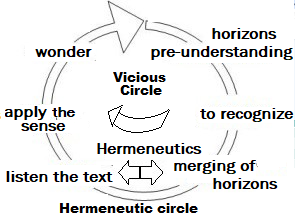
Truth, language and method
The understanding of any phenomenon necessarily involves language and method, language as a means of communicating the phenomenon and method as a strategic path by which the truth can be reached on some issue.
necessarily involves language and method, language as a means of communicating the phenomenon and method as a strategic path by which the truth can be reached on some issue.
Dogmatic and ideological truths have led to narratives and distortions of reality, even those that pass through the imaginary, which is not necessarily an untruth, but often an analogy or metaphor to tell the truth.
Language as the “dwelling place of being” is for the phenomenological and ontological interpretation of truth, i.e. that which goes through the question of the “being” of the “being” is the basis for communicating the truth between source and destination, but it cannot be confused with sender and receiver.
When we have an “entity” as a means of communication, be it analog or digital (another confusion is to give analog an ontological category), it means that it is restricted to being just a “means” of communication, so it makes the message encoded in a signal, for example an analog acoustic wave (fm radio for example) or a signal encoded in zeros and ones, in this case digital, both of which cannot be interpreted as “the dwelling place of being”, but only code, that is, something more conducive to the entity than to being.
The signal aimed at reducing noise and authenticating the message that has been coded should not be confused with the message itself, since it comes from Being and carries within itself not a logic, but an onto-logy, in other words, something originally from Being.
It is in this ontology that we can understand the meaning of dialogue, even between logically opposed messages, since ontologically they can share a fusion of horizons and can then create a method, developed by Heidegger and formalized by Hans-Georg Gadamer.
Gadamer’s explanation of the hermeneutic circle is expressed as:
“The circle must not be degraded to a vicious circle, even if this is tolerated. In it there is a positive possibility of the most original knowledge, which, of course, will only be adequately understood when interpretation understands that its first, constant and ultimate task remains not to receive beforehand, by means of a ‘happy idea’ or by means of popular concepts, either the previous position or the previous vision, but to ensure the scientific theme in the elaboration of these concepts from the thing itself”. (GADAMER, 1998, p. 401).
This is why Gadamer’s studies, entitled Philosophical Hermeneutics, cover many peculiar aspects of his studies and writings, with a contribution that goes beyond philosophy itself, linguistics and, to a certain extent, theological hermeneutics, from which came the work and studies of Schleiermacher, who spoke of “spheres” and “circles” in his studies on hermeneutics.
It is only in this idea of the fusion of horizons, of going beyond the vicious circle, that we can understand an inverse reasoning of one against all, and understand the dialog between opposites.
GADAMER, Hans-Georg (1998). Verdade e Método: Traços fundamentais de uma hermenêutica filosófica. Transl. Flávio Paulo Meurer. 2a. ed. Brazil, Petrópolis: Vozes.









